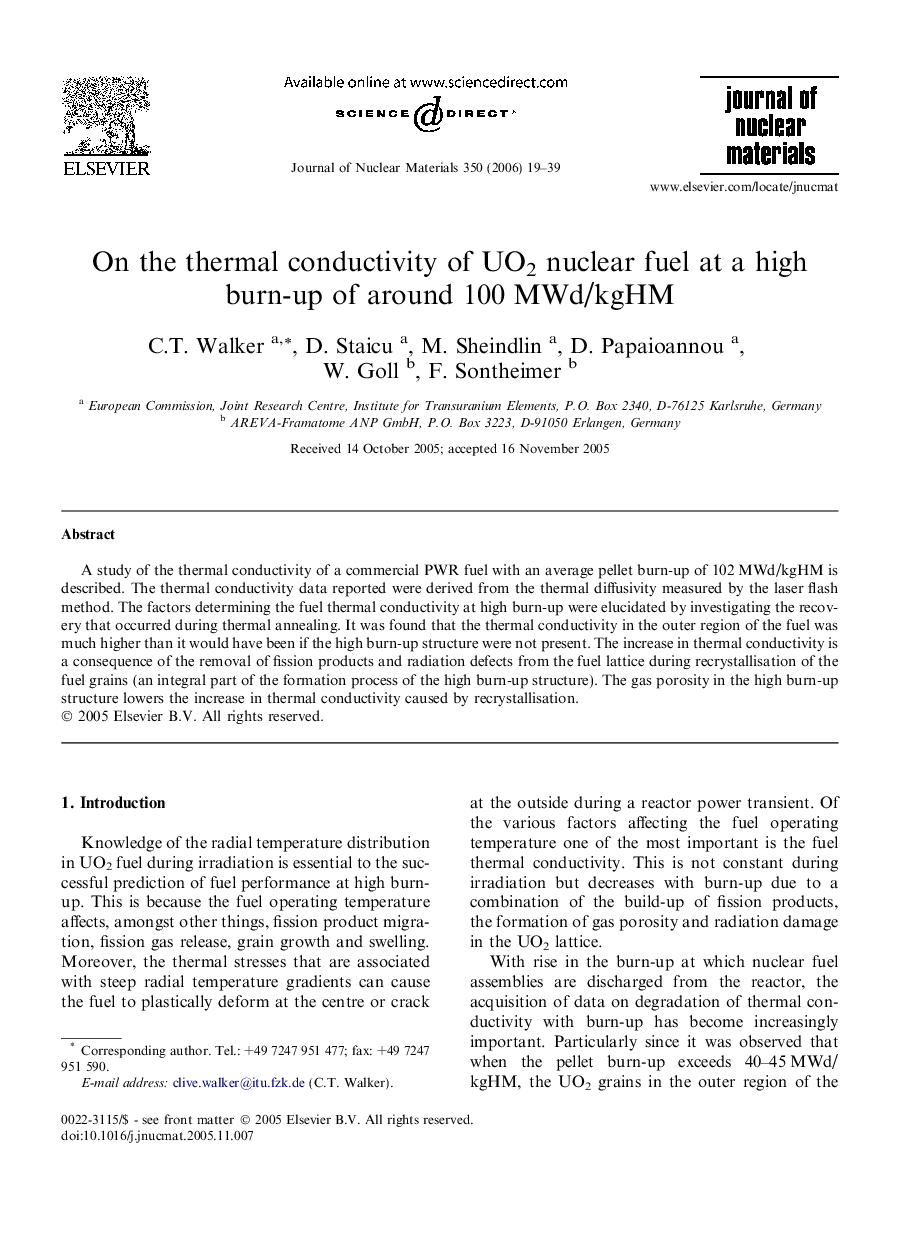| کد مقاله | کد نشریه | سال انتشار | مقاله انگلیسی | نسخه تمام متن |
|---|---|---|---|---|
| 1570077 | 999950 | 2006 | 21 صفحه PDF | دانلود رایگان |

A study of the thermal conductivity of a commercial PWR fuel with an average pellet burn-up of 102 MWd/kgHM is described. The thermal conductivity data reported were derived from the thermal diffusivity measured by the laser flash method. The factors determining the fuel thermal conductivity at high burn-up were elucidated by investigating the recovery that occurred during thermal annealing. It was found that the thermal conductivity in the outer region of the fuel was much higher than it would have been if the high burn-up structure were not present. The increase in thermal conductivity is a consequence of the removal of fission products and radiation defects from the fuel lattice during recrystallisation of the fuel grains (an integral part of the formation process of the high burn-up structure). The gas porosity in the high burn-up structure lowers the increase in thermal conductivity caused by recrystallisation.
Journal: Journal of Nuclear Materials - Volume 350, Issue 1, 15 March 2006, Pages 19–39